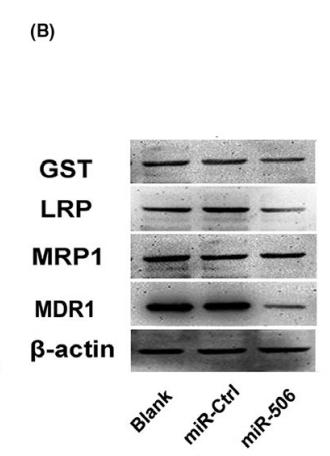MVP Antibody - #DF6732
| Product: | MVP Antibody |
| Catalog: | DF6732 |
| Description: | Rabbit polyclonal antibody to MVP |
| Application: | WB IHC |
| Cited expt.: | WB |
| Reactivity: | Human, Mouse, Rat |
| Prediction: | Pig, Bovine, Horse, Sheep, Rabbit, Dog, Chicken, Xenopus |
| Mol.Wt.: | 99kDa, 110 kDa; 99kD(Calculated). |
| Uniprot: | Q14764 |
| RRID: | AB_2838694 |
Related Downloads
Protocols
Product Info
*The optimal dilutions should be determined by the end user. For optimal experimental results, antibody reuse is not recommended.
*Tips:
WB: For western blot detection of denatured protein samples. IHC: For immunohistochemical detection of paraffin sections (IHC-p) or frozen sections (IHC-f) of tissue samples. IF/ICC: For immunofluorescence detection of cell samples. ELISA(peptide): For ELISA detection of antigenic peptide.
Cite Format: Affinity Biosciences Cat# DF6732, RRID:AB_2838694.
Fold/Unfold
LRP; Lung resistance related protein; Lung resistance-related protein; Major vault protein; Major vault protein, rat, homolog of; MVP; MVP_HUMAN; testicular secretory protein Li 30; VAULT 1; VAULT1;
Immunogens
A synthesized peptide derived from human MVP, corresponding to a region within N-terminal amino acids.
Present in most normal tissues. Higher expression observed in epithelial cells with secretory and excretory functions, as well as in cells chronically exposed to xenobiotics, such as bronchial cells and cells lining the intestine. Overexpressed in many multidrug-resistant cancer cells.
- Q14764 MVP_HUMAN:
- Protein BLAST With
- NCBI/
- ExPASy/
- Uniprot
MATEEFIIRIPPYHYIHVLDQNSNVSRVEVGPKTYIRQDNERVLFAPMRMVTVPPRHYCTVANPVSRDAQGLVLFDVTGQVRLRHADLEIRLAQDPFPLYPGEVLEKDITPLQVVLPNTALHLKALLDFEDKDGDKVVAGDEWLFEGPGTYIPRKEVEVVEIIQATIIRQNQALRLRARKECWDRDGKERVTGEEWLVTTVGAYLPAVFEEVLDLVDAVILTEKTALHLRARRNFRDFRGVSRRTGEEWLVTVQDTEAHVPDVHEEVLGVVPITTLGPHNYCVILDPVGPDGKNQLGQKRVVKGEKSFFLQPGEQLEQGIQDVYVLSEQQGLLLRALQPLEEGEDEEKVSHQAGDHWLIRGPLEYVPSAKVEVVEERQAIPLDENEGIYVQDVKTGKVRAVIGSTYMLTQDEVLWEKELPPGVEELLNKGQDPLADRGEKDTAKSLQPLAPRNKTRVVSYRVPHNAAVQVYDYREKRARVVFGPELVSLGPEEQFTVLSLSAGRPKRPHARRALCLLLGPDFFTDVITIETADHARLQLQLAYNWHFEVNDRKDPQETAKLFSVPDFVGDACKAIASRVRGAVASVTFDDFHKNSARIIRTAVFGFETSEAKGPDGMALPRPRDQAVFPQNGLVVSSVDVQSVEPVDQRTRDALQRSVQLAIEITTNSQEAAAKHEAQRLEQEARGRLERQKILDQSEAEKARKELLELEALSMAVESTGTAKAEAESRAEAARIEGEGSVLQAKLKAQALAIETEAELQRVQKVRELELVYARAQLELEVSKAQQLAEVEVKKFKQMTEAIGPSTIRDLAVAGPEMQVKLLQSLGLKSTLITDGSTPINLFNTAFGLLGMGPEGQPLGRRVASGPSPGEGISPQSAQAPQAPGDNHVVPVLR
Predictions
Score>80(red) has high confidence and is suggested to be used for WB detection. *The prediction model is mainly based on the alignment of immunogen sequences, the results are for reference only, not as the basis of quality assurance.
High(score>80) Medium(80>score>50) Low(score<50) No confidence
Research Backgrounds
Required for normal vault structure. Vaults are multi-subunit structures that may act as scaffolds for proteins involved in signal transduction. Vaults may also play a role in nucleo-cytoplasmic transport. Down-regulates IFNG-mediated STAT1 signaling and subsequent activation of JAK. Down-regulates SRC activity and signaling through MAP kinases.
Phosphorylated on Tyr residues after EGF stimulation.
Dephosphorylated by PTPN11.
Cytoplasm. Nucleus>Nuclear pore complex. Cytoplasm>Perinuclear region.
Note: 5% found in the nuclear pore complex (PubMed:15133037). Translocates from the nucleus to the cytoplasm upon EGF treatment (PubMed:16441665).
Present in most normal tissues. Higher expression observed in epithelial cells with secretory and excretory functions, as well as in cells chronically exposed to xenobiotics, such as bronchial cells and cells lining the intestine. Overexpressed in many multidrug-resistant cancer cells.
MVP 3 mediates interaction with PTEN.
MVP 4 mediates interaction with PARP4.
References
Application: WB Species: human Sample:
Restrictive clause
Affinity Biosciences tests all products strictly. Citations are provided as a resource for additional applications that have not been validated by Affinity Biosciences. Please choose the appropriate format for each application and consult Materials and Methods sections for additional details about the use of any product in these publications.
For Research Use Only.
Not for use in diagnostic or therapeutic procedures. Not for resale. Not for distribution without written consent. Affinity Biosciences will not be held responsible for patent infringement or other violations that may occur with the use of our products. Affinity Biosciences, Affinity Biosciences Logo and all other trademarks are the property of Affinity Biosciences LTD.



